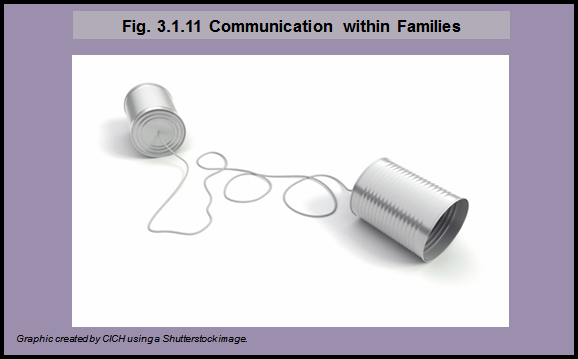Communication within Families

The result of a genetic test is often not only useful to the child and his or her immediate family, but also to the extended family. However, not all people are willing to communicate genetic information and test results to other family members. Communication within families is complex and delicate. It requires that the children and families who are affected must be able to absorb and understand complicated information about their own health. Oftentimes communicating a genetic diagnosis to other relatives relies on the degree of connectedness the individual maintains with relatives, among other things. Some patients may feel their diagnosis is a very private matter, while others may lack the connection needed with family members to communicate genetic results. Since physicians are bound by a duty to protect the privacy of their patients, the communication of sensitive genetic information to family members is placed directly on the patient’s shoulders.1,2
Health professionals have a considerable role to play in guiding this type of communication within families. Age-appropriate information and personalized counselling are the cornerstones of effective genetic counselling for childhood genetic diseases.
Implications
Patients may be in the best position to anticipate the wishes of family members, who may or may not want to know about the genetic information in their family. For those patients willing to disclose, the healthcare professional’s role in encouraging and supporting their patient’s efforts to communicate with their family members is complex. In extremely rare life-saving situations, it is permitted for a physician to communicate genetic information to extended family members after all attempts to convince the patient to share such information have failed.3 Better guidelines and policy for healthcare professionals with respect to counselling patients about communication within their families are much needed. These guidelines should include direction on how and when to involve children in these discussions, and may depend on many factors: age, comprehension, treatment availability or prevention for the disease, and recommended ages to initiate clinical screening or genetic testing.4
1 Nycum G, Avard D, Knoppers B. Intra-familial obligations to communicate genetic risk information: what foundations? what forms? McGill Journal of Law & Health. 2009;3:21–48.
2 Godard B, Hurlimann T, Letendre M, Égalité N. Guidelines for disclosing genetic information to family members: from development to use. Familial Cancer. 2006;5(103):116.
3 Zawati MH, Parry D, Thorogood A, Nguyen MT, Boycott KM, Rosenblatt D, Knoppers BM. Reporting results from whole-genome and whole-exome sequencing in clinical practice: a proposal for Canada? J Med Genet. Published online September 27, 2013.
4 Black L, McClellan KA, Avard D, Knoppers BM. Intrafamilial Disclosure of risk for hereditary breast and ovarian cancer: points to consider. J Community Genet. 2013;4:203–14
